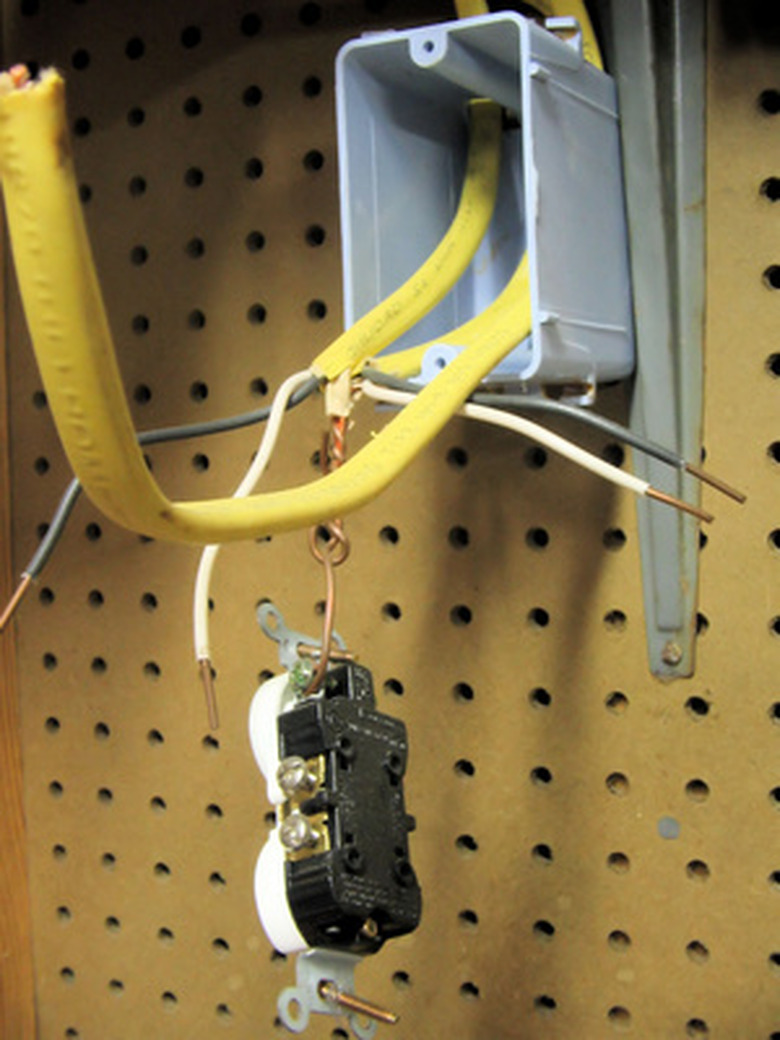How To Detect A Hot Electrical Wire
Things Needed
-
Thick rubber dishwashing gloves
-
Latex coated gloves
-
Rubber soled shoes
-
Multimeter
-
Masking tape
The National Electrical Code specifies certain wire colors as hot wires. In residential construction these colors are black and red. In some wiring applications, a wire is renamed as hot and the NEC requires marking the wire with a piece of black electrical tape. Renaming electrical wires as hot or neutrals is a common practice by electricians and they use colored electrical tape to identify the wires. Problems exist in some wiring applications where the wires are not what their color specifies and not identified. In these instances, you need to identify the hot electrical wire through testing with the circuit on.
Step 1
Insert your hands into thick rubber dishwashing gloves. Wear latex coated gloves over the rubber gloves. Wear rubber soled shoes when testing for hot wires.
Step 2
Touch a probe from a multimeter with the dial set on 250 AC, alternating current, to an exposed wire. Touch the other probe to any metal on the electrical box or surrounding area.
Step 3
Check the reading on your multimeter face. If checking household receptacles and lighting for hot wires, the needle should read between 110 and 120 volts. If checking for hot wires on large appliance receptacles or built-in appliances such as, cook tops, ovens or water heaters, your meter should read between 240 to 250 volts. Wires without current have a zero reading.
Step 4
Touch the probe to each exposed wire. Have pieces of masking tape pre-marked with an "H" to designate a wire is hot. Place a piece of marked tape on each wire you identify as carrying an electrical current.
References
- Electrical-Online.com: Electrical Materials, Tools & Equipment: Voltage Testers
- Don Vandervort's Home Tips.com: How to Safely Test the Electrical Circuit
- InspectAPedia: Electrical Safety Hazards and Safe Electrical Inspection Procedures for Electrical Inspectors and Home Inspectors
- "Wiring 1-2-3"; Steve Cory: 2005
- "National Electrical Code 2008 "; National Fire Protection Association; 2008
